Residing in a place that initially appears to be from some distant time and place, SaraNoa Mark’s contemporary aesthetic practice requires thoughtful observation. Engaged with trying to decipher the invisible activity of time, Mark creates artworks that could easily sit alongside artifacts and tablets created over a millennium ago. This week the COMP Magazine visited Mark in her Hyde Park studio to discuss her youth growing up in the Bronx, her subtle approach to working with color, how looking at antiquated artworks and manuscripts inform her practice, and her frequent scavenging trips along the shores of lake Michigan.
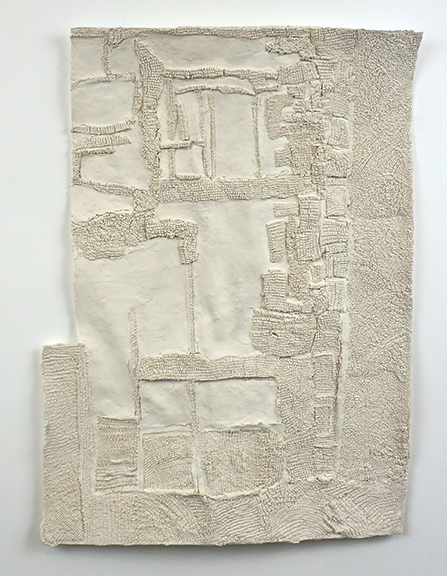
SaraNoa Mark, Unknown Hours, carved clay paper, 14 ¾ x 10 ½”, 2018
I’m fascinated by your trajectory which brought you to Chicago. You grew up in the Bronx, spent time on a kibbutz in Israel, studied painting at Pennsylvania Academy of the Fine Arts in Philly, then landed in Chicago. I’m pretty certain I’ve missed a couple experiences and locales. Our conversation was so very swift. Can we start with some background? Perhaps, you can identify any specific early experiences that inform your present practice?
I grew up in an apartment in the Bronx with four other intense and creative family members. Both my parents are writers and our apartment was filled with paper, newspapers layered in delicate leaning towers, books stacked on any available surface. There were even antique newspapers my mom collected filling spaces beneath our tables. It wasn’t an easy space to grow up in but it truly was a complex and stimulating visual environment with its own laws of gravity. I didn’t consciously choose to work with paper as a medium but reflecting on the place where I grew up it makes sense to me that I have been compelled to investigate the potential of drawing with paper.
I was also raised in a religious Jewish community where I inherited a rich and ancient tradition. The stories of the bible were passed down as the stories of our ancestors. This gave me the feeling of being apart of a continuum that went back in time to the flood. This might be why I feel an intimate relationship with a time that’s past and why I feel strongly connected with objects made thousands of years ago. In my studio practice I constantly look to ancient clay tablets, papyrus fragments, wall reliefs, wall paintings, carved ivory, woven shoes, baskets, nets, and tapestries. These artifacts survive time, as they outlive their maker. Yet, they are fragile and their material temporality forces them to take on new shapes. I am fascinated by this idea of trying to see the constant and invisible activity of time. I am mesmerized by the detail and craftsmanship of these objects, but even more so I am truly awestruck by the ever-surprising fragmented shapes of the objects that are drawn by the effects of time. In this way time becomes visible.
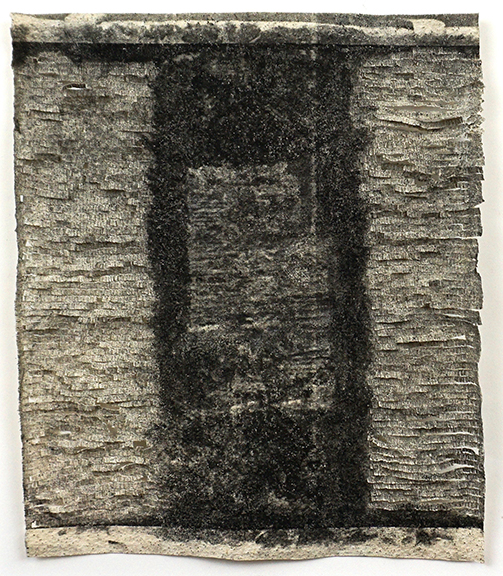
SaraNoa Mark, Eclipse, charcoal, ink, graphite on carved paper, 13 ¾” x 11 ½”, 2017
Lets talk about process. Initially, when I consider your practice I think about antiquated items found at an archeological dig site. Also, there is this push/pull in terms of how I want to view the work. On one level, some pieces appear like aerial views of plots of land, then upon closer inspection I see patterns and symbols that remind of some obscure archaic script. Can you share with us the manner you think about and create your work? What is the intent?
I like that there are multiple ways to read the work. Visually I am looking to be in conversation with ancient objects but I am equally fascinated by landscape as another way to see time. While hiking I look at the rock and trying to see the workings of the wind against the surface repeated with a power and consistency that manifests on the face of everything it touches. In the desert I am trying to visualize a land once filled with water. The effects of the glaciers receding created canyons, I think of these landscapes as very large drawings made by wind and water. There is something very powerful about this idea for me, that an action can be repeated until it eventually carves rock and shapes land. There is something in all this that is connected to our mortality and how we only have the chance to walk on this earth for a finite period that perhaps compels me to look closely at markings that were made over an unfathomable period of time. I also think of the earth as the ultimate drawing and therefore I seek to mimic these forms of repeated mark making. To do so I use NIJI woodcarving tools into paper. The tools consist of five shapes they are: __, /, U, V, . these shapes have become my alphabet. Sometimes I am making drawings and sometimes the drawings lean more toward what feels like writing. And so I have also been looking at texts to make pictures. Text structures that I find particularly compelling are the Talmud, Islamic manuscripts, cuneiform tablets, ostraca, as well as Proust manuscripts. My artistic training was in observational painting and I carry this desire to look and then respond. I think of my works as observational drawings even if most people might view them abstractly. My joy is to be in conversation with the visual world, when I make my drawings I get to talk to canyons and connect and participate in the vast history of human documentation and storytelling.
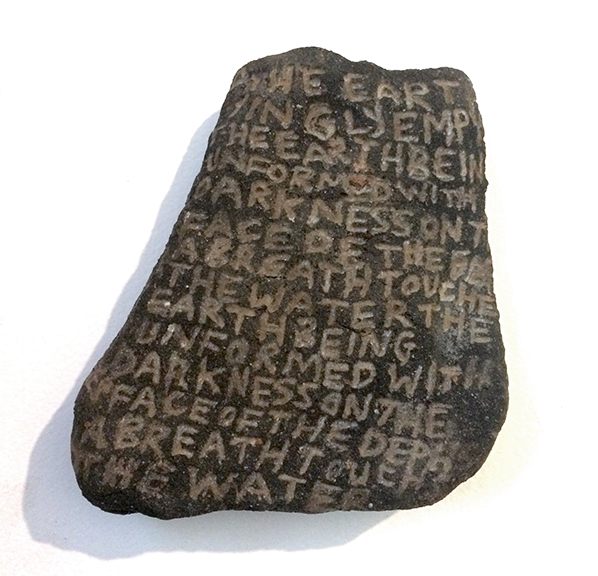
SaraNoa Mark, The Earth Being Unformed, carved asphalt, 4” x 6” x 2”, 2017
You work in a variety of medias, fiber, on paper, sculpture, etc. Throughout, there is frequently a consistent color palette of light earth tones and cream-like colors. I’m wandering if you can discuss how you think about color? What roll does this play in contrast to the tactile aspects in your investigations?
Once I began working with carving tools into paper I asked myself if I could make a drawing without adding anything. My mission became to entirely transform my materials by strictly reworking that which is already there – the fibers of the page. For now, unless I am working with pigmented paper or dyed fabric the work exists in a very quiet palate. Since I am drawing with texture I liked this idea of creating quiet intimate drawings that ask to bring people closer. I am energized by many colors in the world and perhaps eventually will engage those colors in my work, however my instinct is toward quiet.
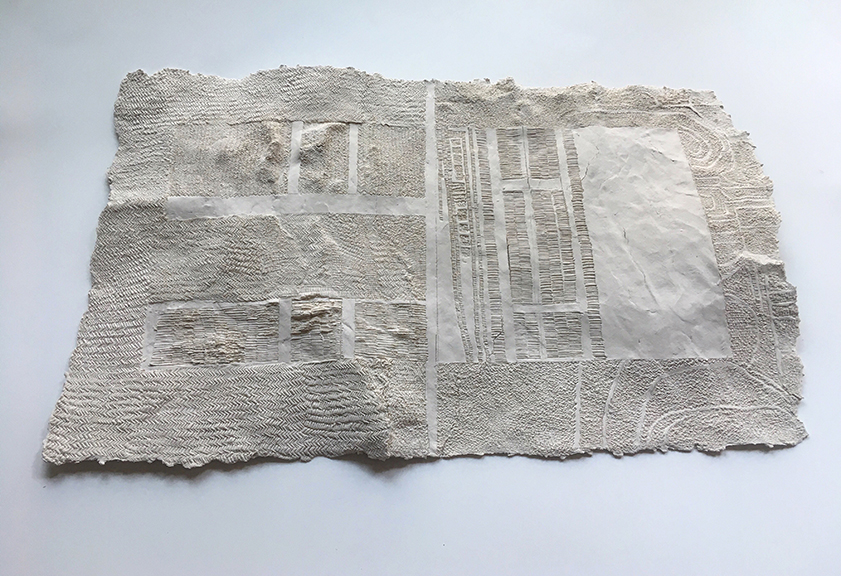
SaraNoa Mark, A sheet from Shahname, carved clay paper, 11″ x 17″, 2018
Much of your works feels weathered, almost like it was created outdoors by natural influences. In conversation you noted that you spend time gathering items like driftwood and other seemingly discarded materials that have washed up along the lakefront. I am wandering what role these excursions play in your investigations?
Living close to a large body of water has become an important part of my life and art practice. I grew up in the Bronx near the Hudson River, for much of my life those waters provided an essential connection to nature. My Chicago home near Lake Michigan has deepened my perspective, standing at its shore the water feels endless. I follow the way the water works at organizes is contents by size. There are two beaches near 51st Street. One is filled with large debris, pipes, bricks, and asphalt chunks. The next beach over is made up entirely of pebbles. I collect the bricks and asphalt chunks for carving poems.
I have found pieces of driftwood that read like tablets. Last winter I brought pieces of wood to The Point and fed them between the large rocks hoping they would get marked by the water. Of course, I never was able to find them again, but who knows? Maybe someone else will. Often I’m not looking to gather anything. Visiting the lake is a way for me to touch base with something that feels grand. The water is always offering up treasure on its shore. Recently, gigantic pieces of wood washed up along the 57th Street beach. My partner and I played around with them, creating arrangements, and then walked away.
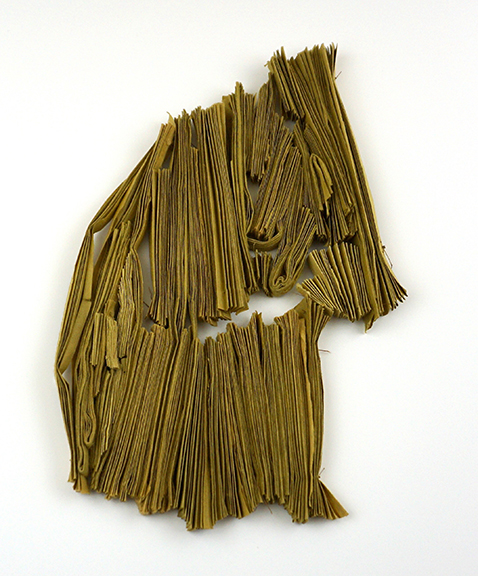
SaraNoa Mark, Asymptote, paper and thread, 13 ¼” x 8 ½”, 2017
Can you share with us what you value most in your aesthetic practice?
I value dedicating my life to becoming sensitive to the visual world. I value using my hands to express a non-verbal language. I appreciate the devotional aspects of sustaining a studio practice and how I must make peace with the unknown. I believe that for the works to succeed they must be made from a place of honesty. I value residing in vulnerability and the practice of cultivating excitement and curiosity for living.
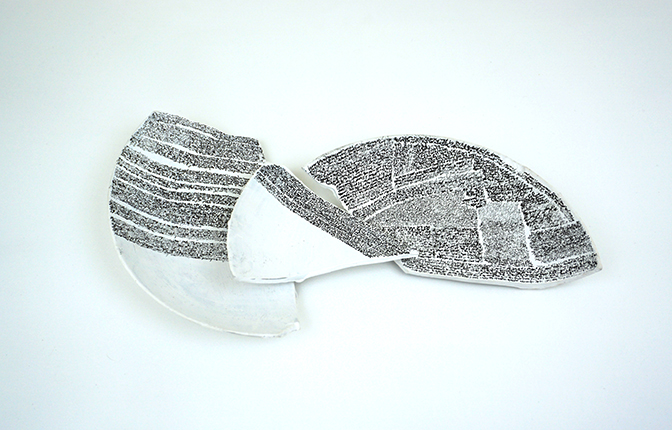
SaraNoa Mark, Ostraca, Ink on ceramic, 7 ½” x 9”, dimensions variable, 2018
In addition to your studio practice, you collaborate with James Kao and Mika Horibuchi at 4th Ward Project Space. Can you discuss what you find most interesting in this effort?
Helping with 4th ward project space has allowed me to feel grounded in Chicago. I am very grateful to James and Mika for inviting me to collaborate and assist them in running the space. It is interesting to slowly learn from them how to operate an artist run space. I appreciate the cooperative nature of the operation it is a welcome contrast from the solitude of my studio practice. What I find most interesting is building a relationship with the project space and seeing with each exhibition that one space can be filled with numerous energies depending on the qualities of the art and the installations. When it is time to open a new show I feel excited for the space to take on a new life.
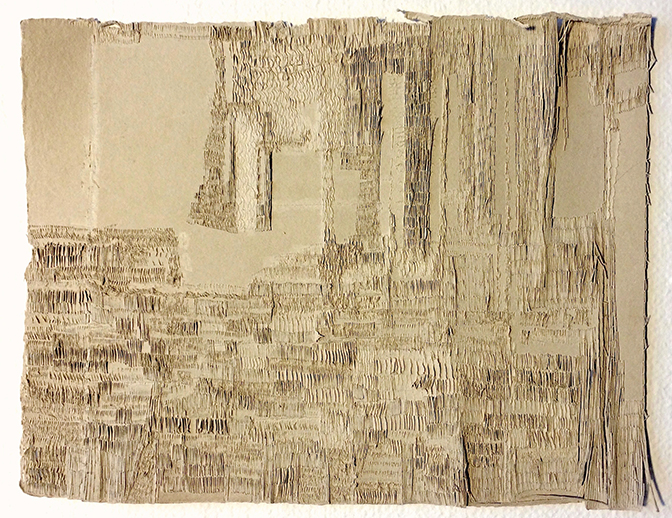
SaraNoa Mark, Shaping Sand, carved paper, 17.75” x 13.5″, 2016
While in your studio you were working upon a series of works on paper. I am curious what the plan is for the rest of 2018? Do you have any specific projects you hope to complete this year? Any upcoming exhibitions? Or scavenging journeys?
In July I will be moving my studio from Hyde Park to the Chicago Artist Coalition to participate in the yearlong BOLT residency. I am very sensitive to my environment so I am curious how working alongside other artists affects my practice. During the next year I will have the opportunity to present my first solo exhibition. I am looking forward to the challenge of treating the space as a drawing. I am also working towards creating an artwork that can exist outdoors in the public space. I have been dreaming of this for sometime and I am hoping this is the year when I realize this project. I am pretty excited about what I am envisioning.
I like this question about scavenging journeys hopefully each day is a scavenging journey of some sort. I try to go backpacking at least once each year; I will be making this pilgrimage soon. Becoming vulnerable to the elements makes me listen closely to the natural soundscape it is during these times of listening and humbly existing where I find my deepest sources of inspiration.
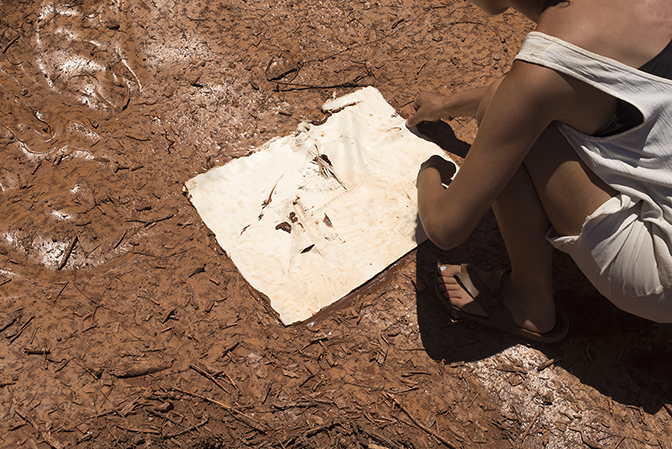
SaraNoa Mark making work in Arizona during a residency at the Sedona Summer Colony
For additional information on the art and practice of SaraNoa Mark, please visit:
SaraNoa Mark – https://www.saranoamark.com/
Chicago Artist Coalition – http://www.chicagoartistscoalition.org/programs/bolt-residency/2018-2019/saranoa-mark
Montello Foundation – http://www.montellofoundation.org/elements/snm%2017.pdf
Water Portraits – https://vimeo.com/user80599902
4th Ward – http://www.4wps.org/
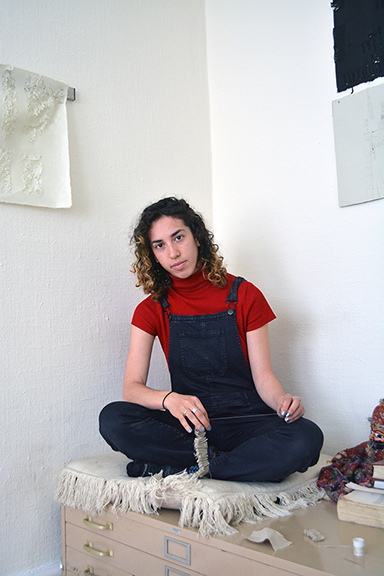
Artist SaraNoa Mark in her Hyde Park studio, Chicago, IL, 2018
Artist interview and portrait by Chester Alamo-Costello


